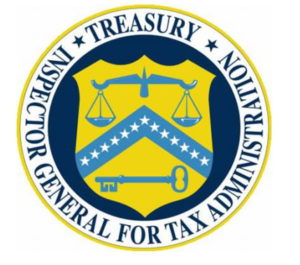TREASURY INSPECTOR GENERAL FOR TAX ADMINISTRATION
Saturday, April 8th, 2017 @ 9:00AM
CFEG reports that the Treasury Inspector for Tax Administration (TIGTA) released a report on April 7, 2017 detailing its interim results of the 2017 tax filing season. CFEG highlights TIGTA’s findings with respect to identity theft tax refund fraud. The full report may be viewed by clicking on the link below.
According to TIGTA the IRS continues to expand its efforts to detect tax refund fraud. As of March 4, 2017, the IRS reports that it identified 30,674 tax returns with $961 million claimed in fraudulent refunds and prevented the issuance of $918.6 million (95.6 percent) in fraudulent refunds. In addition, the IRS reports that expanded use of controls to identify fraudulent refund claims before they are accepted into the processing system has identified approximately 10,954 fraudulent e-filed tax returns as of February 28, 2017, and 2,317 paper-filed tax returns as of March 16, 2017. The IRS also identified and confirmed 14,068 fraudulent tax returns involving identity theft as of March 2, 2017, and identified 17,227 prisoner tax returns for screening as of March 4, 2017.
TIGTA reported that the decrease in the number of fraudulent tax refunds the IRS detects and stops is attributable to the continued expansion of processes to prevent fraudulent tax returns from entering the tax processing system, i.e. rejecting e-filed tax returns and preventing paper-filed tax returns from posting. For example, as of March 13, 2017, the IRS locked approximately 33.2 million taxpayer accounts of deceased individuals. The locking of a tax account results in the rejection of an e-filed tax return and prevention of a paper-filed tax return from posting to the Master File if the SSN associated with a locked tax account is used to file a tax return. According to the IRS, as of February 28, 2017, it had rejected approximately 10,954 fraudulent e-filed tax returns, and as of March 16, 2017, it had stopped 2,317 paper-filed tax returns from posting to the Master File.
For the 2017 Filing Season, TIGTA found that the IRS is using 197 identity theft filters to identify potentially fraudulent tax returns and prevent the issuance of fraudulent tax refunds. These filters incorporate criteria based on characteristics of confirmed identity theft tax returns, including amounts claimed for income and withholding, filing requirements, prisoner status, taxpayer age, and filing history. Tax returns identified by these filters are held during processing until the IRS can verify the taxpayer’s identity. The IRS attempts to contact the individual who filed the tax return and, if the individual’s identity cannot be confirmed, the IRS removes the tax return from processing. This prevents the issuance of many fraudulent tax refunds. As of March 2, 2017, the IRS reported that it had identified and confirmed 14,068 fraudulent tax returns and prevented the issuance of $91.9 million in fraudulent tax refunds as a result of the identity theft filters.
TIGTA found that as of March 2, 2017, for Processing Year 2017, the IRS identified and confirmed 14,068 tax returns as fraudulent. For processing year 2016 the IRS identified and confirmed 31,578 tax returns as fraudulent and for processing year 2015 the IRS identified and confirmed as fraudulent 16,523 tax returns.
In February 2017, TIGTA reported that with the passage of legislation to accelerate the reporting date of Forms W-2, the IRS should be able to significantly reduce the number of undetected tax returns reporting false wages and withholding if it compares available Form W-2 information to the tax return at the time the tax return is processed. Similar to Processing Year 2016, the IRS initiated a voluntary program in which 18 payroll providers were requested to submit Forms W-2 directly to the IRS by January 31, 2017. The IRS uses the identity theft models to compare this accelerated Form W-2 information to the tax return at the time the tax return is processed for identity theft detection. The IRS stated that as of March 2, 2017, it selected 21,461 tax returns for identity theft treatment based upon the early submission of Forms W-2. Finally, in response to concerns raised by TIGTA regarding multiple refunds going to the same address or bank account, the IRS continues to use its clustering filter tool to group tax returns based on characteristics that include the address, zip code, and bank routing numbers. For the tax returns identified, the IRS applies a set of business rules in an attempt to ensure that legitimate taxpayers are not included. Tax returns identified are held from processing until the IRS can verify the taxpayer’s identity. As of March 2, 2017, the IRS reports that, using this tool, it identified 72,622 tax returns and prevented the issuance of approximately $334.6 million in fraudulent tax refunds.
Posted by cfegov
Categories: Identity Theft












